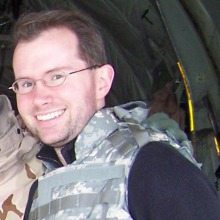
If, as the father of modern management, Peter Drucker says, “culture eats strategy for breakfast” then IT strategy at the Federal Communications Commission will not be resembling a morning meal any time soon — at least not while Dr. David Bray heads the agency as chief information officer.
The self-branded generation X/Y “tweener” stepped into his role at FCC just under a year ago. Confronted by the Commission’s knot of legacy IT systems he took on the task of modernizing them, all just ahead of the arrival of the new FCC Chairman Tom Wheeler last November.
“I often think that being CIO is sometimes like buying a used car sight unseen and driving it off the lot, then opening up the hood and saying ‘what did I just buy?” Bray told WashingtonExec in a recent phone interview, noting that 40 percent of the agency’s 207 legacy systems are more than 10 years old.
Federal agencies government-wide currently spend more than 70 percent of their IT budgets on maintaining legacy systems, according to statistics from the Government Accountability Office. With the majority of FCC’s budget tied up in maintaining those legacy systems, freeing up the necessary funds for migration — which doesn’t come cheap — becomes a challenge.
But that’s not to say freeing up front-end funds is Bray’s largest roadblock. He’s intent on cultivating a proactive, solution-focused ‘start-up’ mentality within the Commission to spur the buy-in toward migration. Bray’s personal commitment and the commitment in others he has witnessed at FCC to go to the next level, along with terrific management support, bodes well for the success of the mission.
Confronting the Impossible
Bray, whose public service career spans 20+ years, has since his early beginnings as a 15-year old intern with the Department of Energy dedicated himself to pursuing those challenges deemed ‘impossible’ while running his course most recently as executive director for the bipartisan National Commission for the Review of the Research and Development Programs of the U.S. Intelligence Community.
“I enjoy most when someone tells me that something is near impossible or never been done before and then I get to tackle it and see if I can do it,” Bray said. “I love being the underdog because you get to challenge the status quo.”
Bray also served as the IT Chief for the Bioterrorism Preparedness and Response Program’s response to 9/11 and anthrax events in 2001. At one point in his career that meant volunteering to deploy in Afghanistan in 2009 while on an assignment with the Institute for Defense Analyses.
At FCC that has meant harnessing IT in a way that drives people to collaborate.
“I often say that my role as CIO is 80 percent people, 20 percent technology. It really is trying to connect people with the right tools to get their job done for the right mission,” Bray said. “IT is just one way that you can get people to work together… it has also a huge value in face-to-face.”
Cultivating a Start-up Mentality within FCC
While identifying funding is a necessary lubricant in moving toward modernization, the art of culture change, Bray said, is the game’s motor.
“We can have the best plans as to where we’re going to go for the IT efforts… we also have to make sure we have the culture buy into it and there’s a good fit with the culture,” he said.
On the buy-in front, this means Bray’s endeavors must mesh well with the current FCC culture.
Bray’s Intrapreneurs, aka, “Entrepreneurs on the Inside” initiative aims to do just that by tasking individual entrepreneurs within each of the organization’s 18 bureaus and offices to serve as the IT activity liaisons as the desire for change and consistency battle it out within the FCC.
“Intrapreneurs are actually embedded in each of the different bureaus and offices to begin to listen, to begin to understand their narratives, to begin to understand their needs, so that they can then link what they’re hearing and those mission needs of that bureau or office, with the FCC enterprise as a whole,” Bray said of his attempt to begin to shape the culture change.
Power for the People
The Twitter-savvy CIO is a champion of “the people” and referenced the Founders and their 18th century Federalist Papers on multiple occasions during his conversation with WashingtonExec to illustrate his leadership philosophy — empower employees to rule themselves through choice architectures — and identify the key to establishing change at the FCC.
“I’ve enabled [employees]to be involved with actually discussing the tradeoffs, rather than [having them come]from the top down” Bray said, describing a scenario where employees wishing to upgrade to a particular technology were tasked with pitching or “storyboarding” their idea to the commission by tabulating costs and contributing their input about where financial tradeoffs should be made . “Especially in changing environments and changing worlds, you need to empower the edge because the edge will know more what’s needed than the top,” Bray said.
But Bray and the commission aren’t just giving power to the people of the FCC. The organization’s recently launched Speed Test mobile application allows users to track their mobile broadband performance over time by three times per day tracking speed and exhibiting stats about latency, download and upload speed and packet loss.
The FCC has essentially then crowdsourced to aggregate the anonymous data to build a map of mobile broadband performance across the country — “empowering the public to participate in doing something that historically government had to do,” Bray said.
“Historically…the FCC actually had to spend taxpayer dollars to install devices in homes and spend taxpayer dollars to drive cars around and test cell phone connectivity,” he said. “Now the public is participating in it.”
The FCC in return makes the data available to everyone, meaning our nation’s Founders, who in The Federalist Papers No. 51 state that government embodies “the greatest reflection of all humanity” would be glad to see public service becoming more open, transparent, and participatory.


